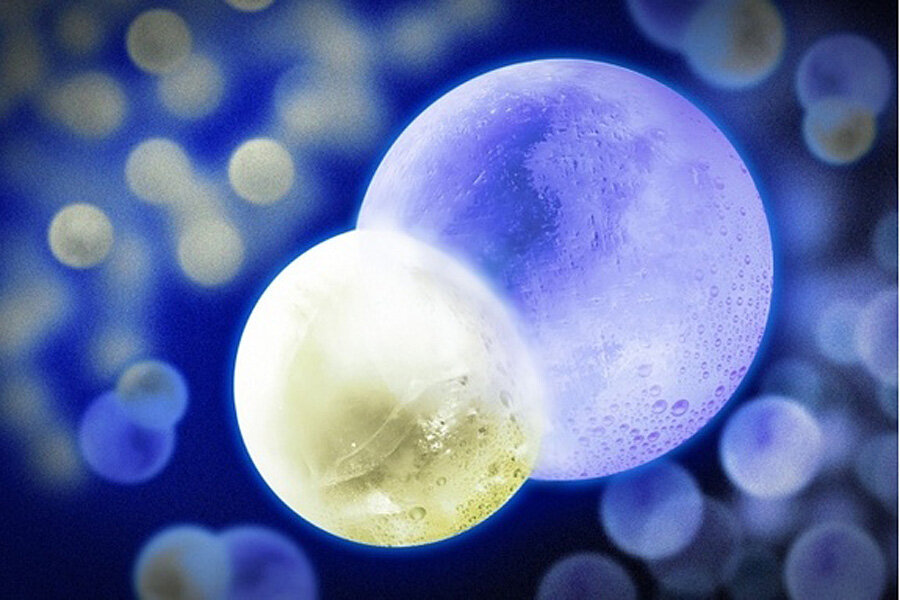500 nanokelvins! MIT scientists set cold-temperature record.
Loading...
Physicists have chilled molecules to just a smidgen above absolute zero — colder than the afterglow of the Big Bang.
Scientists have created such superchilled atoms, these are the coldest molecules (which are two or more atoms chemically connected) ever created, the scientists said. The achievement could reveal the wacky physics thought to occur at jaw-droppingly cold temperatures.
At normal everyday temperatures, atoms and molecules whiz at superfast speeds around us, even crashing into one another. Yet strange things happen when matter gets extremely cold. And physicists had thought these particles would cease to zip and collide as individuals, and instead would behave as a single body. The result was thought to be exotic states of matter never observed before. [The 9 Biggest Unsolved Mysteries in Physics]
To explore this cold scenario, a team at MIT, led by physicist Martin Zwierlein, cooled down a sodium potassium gas using lasers, to dissipate the energy of individual gas molecules. They chilled the gas molecules to temperatures as low as 500 nanokelvins — just 500-billionths of a degree above absolute zero (minus 459.67 degrees Fahrenheit, or minus 273.15 degrees Celsius). That's more than a million times colder than interstellar space. (The density of the gas in their experiment was so small that it would qualify as near-vacuum in most places.)
They found that the molecules were quite stable, and tended not to react with other molecules around them. They also found the molecules showed strong dipole moments, which are the distributions of electric charges in a molecule that govern how they attract or repel other molecules.
Sodium and potassium don't usually form compounds — both are positively charged, so they usually repel each other, and are attracted to elements like chlorine, which makes table salt (NaCl) or potassium chloride (KCl). The MIT team used evaporation, and then lasers, to cool the clouds of individual atoms. They then applied a magnetic field to get them to stick together to form sodium potassium molecules.
Next, they used another set of lasers to cool a sodium potassium molecule. One laser was set at a frequency that matched the molecule's initial vibrating state, and the other matched its lowest possible state. The sodium potassium molecule absorbed the lower energy from one laser and emitted energy to the higher-frequency laser. The result was a very low energy state and an extremely cold molecule.
The molecule still wasn't as stable as everyday chemicals, lasting only 2.5 seconds before it broke up, but that is a long time when dealing with extreme conditions like this. It's a step to cooling the molecules even further, to see some of the quantum mechanical effects that theories predict. Such effects have been demonstrated in single atom substances like helium, but never in molecules, which are more complicated as they rotate and vibrate. For instance, super-cold helium becomes a liquid with no viscosity – a superfluid. Theoretically molecules might enter such exotic states as well.
The study was published in the May 22 issue ofthe journal Physical Review Letters.
Follow Live Science @livescience, Facebook & Google+. Original article on Live Science.
- Photos: The 8 Coldest Places on Earth
- Elementary, My Dear: 8 Elements You Never Heard Of
- Gallery: Dreamy Images Reveal Beauty in Physics
Copyright 2015 LiveScience, a Purch company. All rights reserved. This material may not be published, broadcast, rewritten or redistributed.







